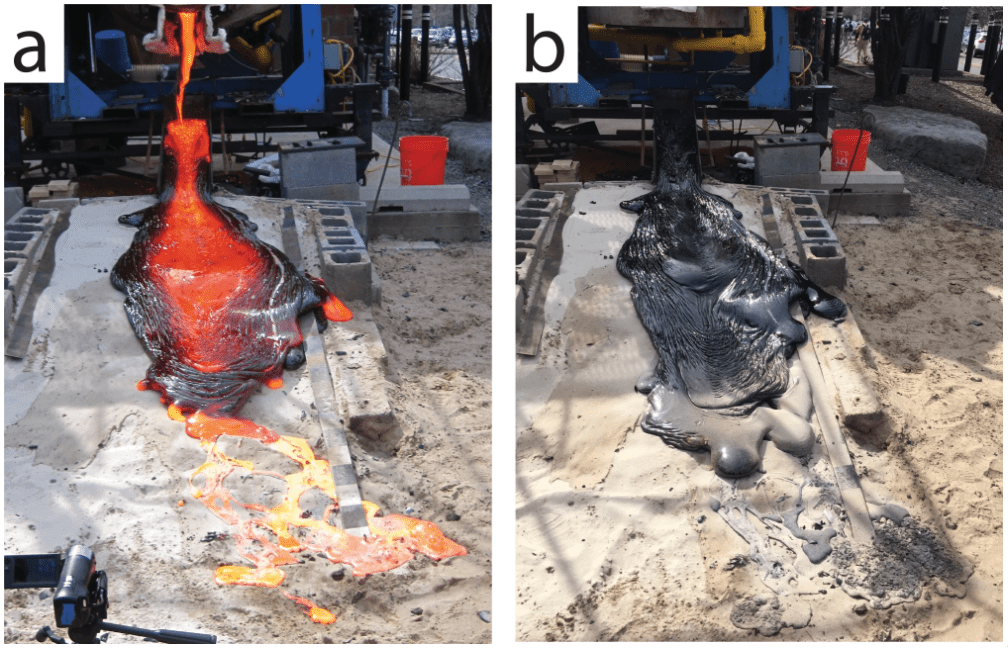If you like volcanoes, Earth isn’t a bad place to live on. After all, our planet is quite geologically active, and that also translates into a respectable level of volcanism. But when it comes to having a variety of flavors, the Earth can be a bit lacking.

A new paper, however, comes to estimate what one type of not-yet-seen volcanic activity might look like. Called ‘ferrovolcanism’, it is likely a hallmark of geologically active worlds whose composition is mainly metallic. The study, although still purely theoretical, could help us better understand some of the more peculiar alien landscapes out there. And even though ‘metal volcanoes’ sounds like something pretty jagged and oppressive-looking, the team’s findings suggest that they’re actually quite mellow.
Metal volcanoes
“Cryovolcanism is volcanic activity on icy worlds, and we’ve seen it happen on Saturn’s moon Enceladus,” says Arianna Soldati, assistant professor of marine, earth and atmospheric sciences at NC State and lead author of a paper describing the work. “But ferrovolcanism, volcanic activity on metallic worlds, hasn’t been observed yet.”
The study, published by researchers at the North Carolina State University, aimed to give us an idea of how volcanic activity would look on a planet made predominantly of metal.
Volcanoes are born when magma, the partially-molten material found beneath a planet’s surface, erupts. The exact nature and behavior of this magma is closely related to the chemical composition of the planet. On Earth, therefore, magmas tend to be mostly molten rock (i.e. silica molecules). On icy worlds, however, magma is in fact a mixture of fluids such as water, ammonia, or methane, all super-chilled.
What the team wanted to find out, however, is how volcanism would look on 16 Psyche, a 140-mile diameter asteroid floating merrily in the asteroid belt between Mars and Jupiter. Infrared and radar analysis of its surface suggests that 16 Psyche is formed mainly of iron and nickel. Even better, though, it’s also the target for an upcoming NASA mission. This inspired Soldati to try and determine what volcanism would look like on the asteroid.
“When we look at images of worlds unlike ours, we still use what happens on Earth—like evidence of volcanic eruptions—to interpret them,” Soldati says. “However, we don’t have widespread metallic volcanism on Earth, so we must imagine what those volcanic processes might look like on other worlds so that we can interpret images correctly.”
The team defined two types of ferrovolcanism that they believe are possible. Type 1, or ‘pure’ ferrovolcanism, occurs on bodies made entirely of metal. Type 2, or ‘spurious’ ferrovolcanism, is what we’re likely to see on bodies that have both rocky and metal elements in their chemical mix.
Together with members of the Syracuse Lava Project, the researchers then simulated the second type, in which metal separates from rock as the magma melts down, in the lab.
“The Lava Project’s furnace is configured for melting rock, so we were working with the metals (mainly iron) that naturally occur within them,” Soldati says. “When you melt rock under the extreme conditions of the furnace, some of the iron will separate out and sink to the bottom since it’s heavier.”
“By completely emptying the furnace, we were able to see how that metal magma behaved compared to the rock one.”
Metallic lava (magma becomes lava once it reaches the surface) can flow up to 10 times faster, and spreads more thinly, than rock lava, the team found. As it flows, this material also separates into an abundance of braided channels, they add. Furthermore, metal lava tended to flow largely beneath the rock one, and emerged at the leading edge of the lava body.
Another important finding of the study is that the thin, braided layers of metallic lava, once cooled, give a distinctive appearance to a planet’s surface. This is very different in nature from those produced by rocky lava flows, Soldati explains, meaning that the two types of volcanism should be easy to spot from afar.
“Although this is a pilot project, there are still some things we can say,” Soldati says. “If there were volcanoes on 16 Psyche—or on another metallic body—they definitely wouldn’t look like the steep-sided Mt. Fuji, an iconic terrestrial volcano. Instead, they would probably have gentle slopes and broad cones. That’s how an iron volcano would be built—thin flows that expand over longer distances.”
The paper “Imagining and constraining ferrovolcanic eruptions and landscapes through large-scale experiments” has been published in the journal Nature Communications.






